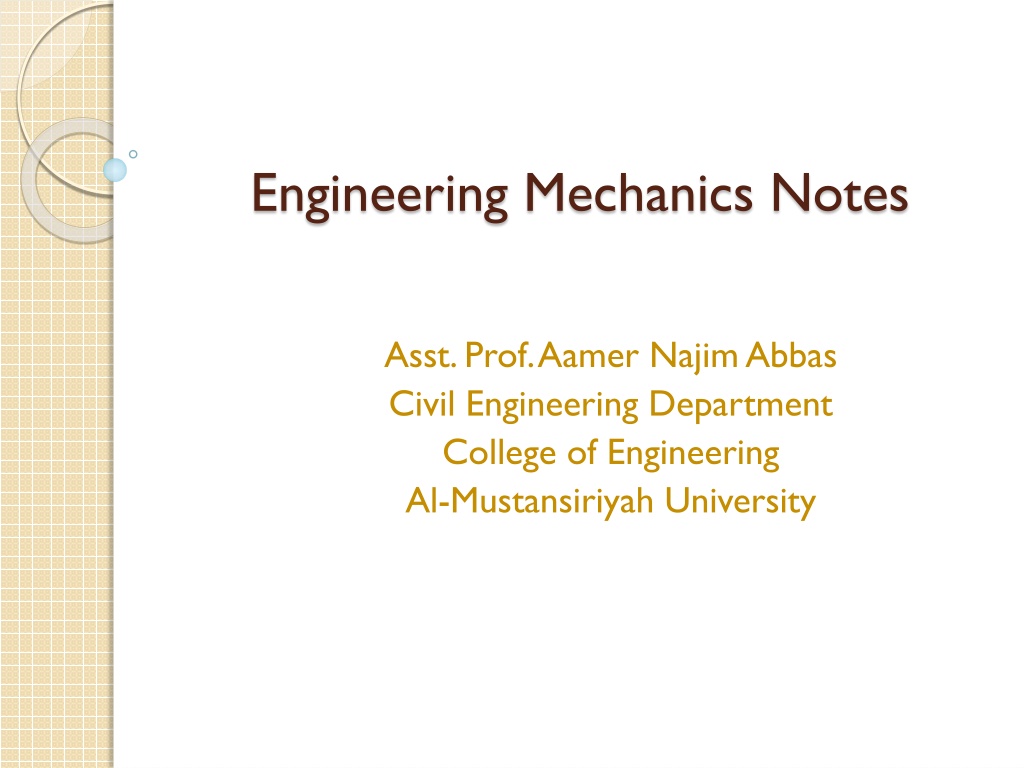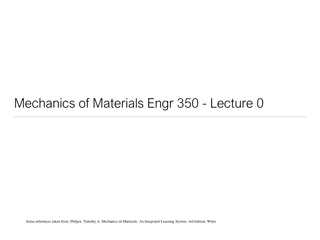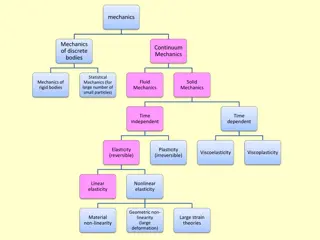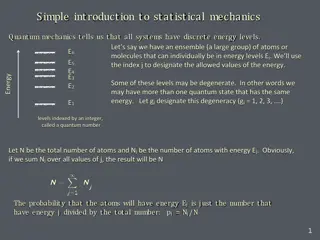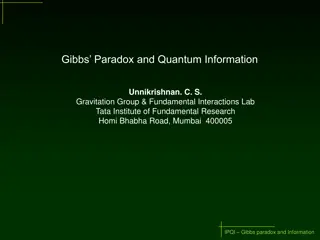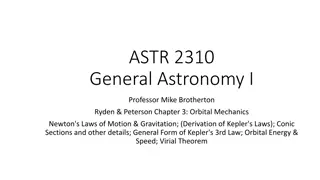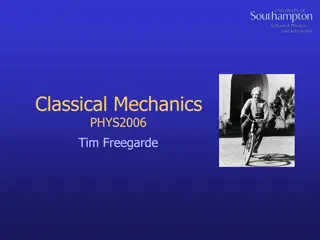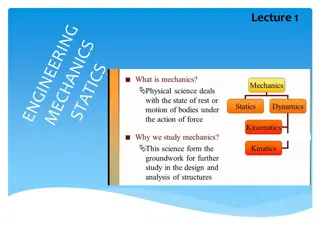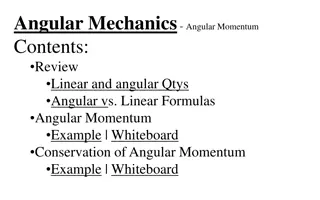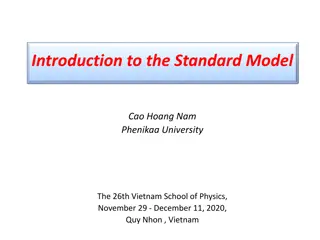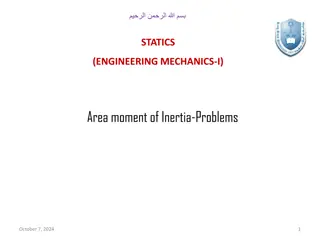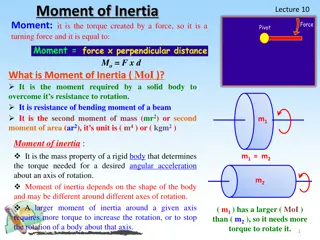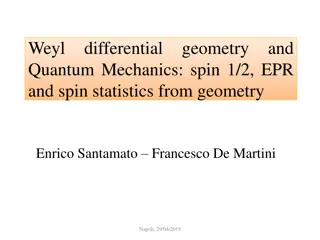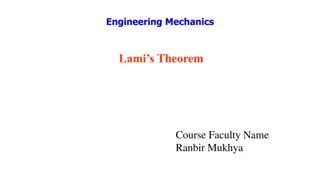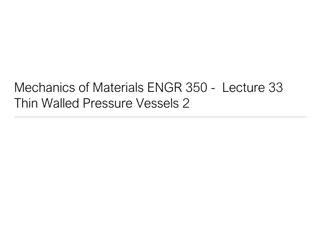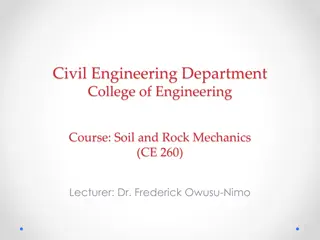Engineering Mechanics Basics: Introduction, Concepts, and Laws
Dive into the fundamental concepts of engineering mechanics, covering topics such as space, time, mass, and force. Explore Newton's three fundamental laws and the system of units used in mechanics, including SI and English units. Understand the difference between mass and weight and learn about the basic principles governing rigid bodies and deformable bodies in mechanics.
Download Presentation

Please find below an Image/Link to download the presentation.
The content on the website is provided AS IS for your information and personal use only. It may not be sold, licensed, or shared on other websites without obtaining consent from the author. Download presentation by click this link. If you encounter any issues during the download, it is possible that the publisher has removed the file from their server.
E N D
Presentation Transcript
Engineering Mechanics Notes Asst. Prof. Aamer NajimAbbas Civil Engineering Department College of Engineering Al-Mustansiriyah University
Chapter 1 - Introduction Mechanics - the physical science which describes or predicts the conditions of rest or motion of bodies under the action of forces. Rigid bodies statics dynamics Deformable bodies Fluid Mechanics compressible - gas incompressible - liquids In Statics we will assume the bodies to be perfectly rigid,no deformation. This is never true in the real world,everything deforms a little when a load is applied. These deformations are small and will not significantly affect the conditions of equilibrium or motion,so we will neglect the deformations. Rigid body - a body is considered rigid when the relative movement between its parts are negligible.
Basic concepts: space, time, mass, force space - the geometric region occupied by bodies whose positions are described by linear and angular measurements relative to a coordinate system. time - the measure of the succession of events mass - the measure oaf the inertia of a body, which is its resistance to a change of motion. sometimes called "quantity of matter" force - the action of one body on another Newton developed the fundamentals of mechanics. The concepts above, space, time, and mass are absolute, independent of each other in Newtonian Mechanics.
As an aside: Hamiltonian Mechanics - impulse and momentum Langrangian Mechanics - energy Newtonian Mechanics - forces Newton's 3 Fundamental Laws 1st Law -A particle remains at rest or continues to move in a straight line with a constant speed if there is no unbalanced force acting on it (resultant force = 0). 2nd Law - the acceleration of a particle is proportional to the resultant force acting on it and is in the direction of this force. F = ma 3rd Law -the forces of action and reaction between interacting bodies are equal in magnitude, opposite in direction, and act along the same line of action (Collinear).
System of Units Base units are units of length, mass and time. Length Mass Time SI Units Meter (m) Kilogram (kg) Second (s) English Units Foot (ft) Slug (slug) Second (s) Force: Newton (N) 1 N = (1 kg)(1 m/ s ) 1 Newton is the force required to give a mass of 1 kg an acceleration of 1 m/ s .
Weight is a force. The weight of 1 kg Mass is: W = mg W = (1 kg)(9.81 m/ s ) W = 9.81 N Get to know SI prefixes. Units of Area and Volume: Area has units (Length) Volume has units (Length)3 Let's go over the English System: F = ma 1 lb = m (1 ft/s2) m = 1 lb s2 /ft = 1 slug What is the mass of an object that weighs 1 pound? F = mg 1 lb = m (32.2 ft/ s ) m = 1/32.2 lb s2/ft = 1/32.2 slug
This is the difference between Mass and Weight. 1 lb is the force required to give a mass of 1 slug an acceleration of 1 ft/ s . 1 lb is the force required to give a mass of 1/32.2 slug an acceleration of 32.2 ft/ s . What is the weight of an object that has a mass of 1 slug? W = (1 lb s / ft)(32.2 ft/ s ) W = 32.2 lbs W = mg m = W/g W/g is often substituted for m, especially in the English System. Force is in Pounds! Mass is in Slugs! Forget about the 1 lb mass stuff.
Conversion from one System of Units to Another: 1 ft = 0.3048 m 1 lb = 4.448 N 1 slug = 1 lb s /ft = 14.59 kg Numerical Accuracy: The accuracy of the solution depends on: Accuracy of given data Accuracy of computations Example: given 10.1, 9.81, and 10.2, what is their average? 10.2 + 9.8 + 10.2 = 3.01 AVG = 30.11/3 = 10.3666 AVG = 10.4 Can't get more accurate than the least accurate #.
